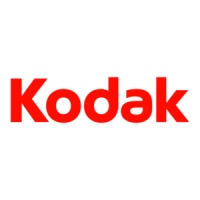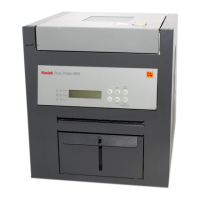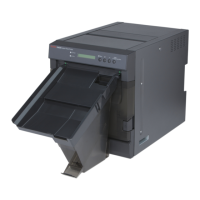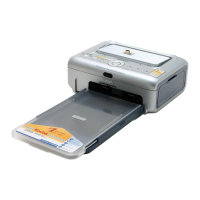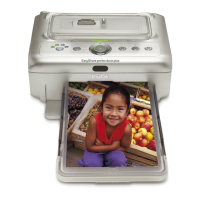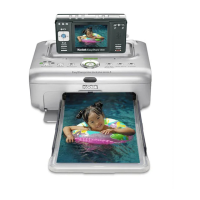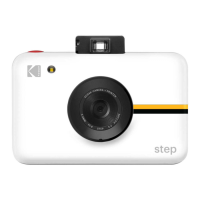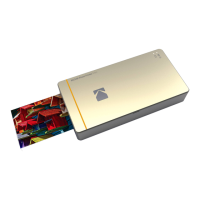Film Technical Information
January 17, 2007 8F927 5-3
Handling Developed
Film
Handling DryView Laser Imaging Film requires reasonable care. Spills,
humidity, and other moisture typically have no significant effect on developed
films. However, prolonged exposure to intense light or excessive heat
(130°F/54.4°C) for more than 3 hours may cause some gradual darkening of
images. Leaving films in vehicles in hot climates for extended periods of time
is not recommended.
For best results, store film in sleeves when not being reviewed. DryView Laser
Imaging Film can be left on a light box for more than 24 hours; in extreme
cases in which light boxes are exceptionally hot (120° F/49°C), Kodak
recommends removing them prior to 8 hours of continuous exposure.
Take care when using spotlight viewing for more than 30 seconds because
temperatures near the light source may exceed 180° F/82.2°C. Use in slide
projectors is not recommended due to the high temperatures generally found
in these devices.
With DryView technology, a small amount of final development occurs when
the film exits the laser imager and is initially exposed to ambient or view-box
lighting. This is virtually undetectable and has no effect on image quality (i.e.,
typically 0.02 change in density). This small density increase is uniform and
permanent upon full exposure of the film under normal handling conditions
(i.e., room light or view box).
Archiving Developed
Film
DryView Laser Imaging Film has been tested and can be archived for more
than 100 years when stored at American National Standards Institute (ANSI)
recommended storage conditions (77°F/25°C). Developed films may be
stored at higher temperatures; however, that may reduce the number of years
the film can be stored. For example, storing films at a constant elevated
temperature of 90°F/32.2°C may reduce archive capability to 30 years.
Exposing to Moisture DryView Laser Imaging Films typically withstand humidity, spills and other
forms of water without any significant effect on image quality or film integrity.
If needed, film can be cleaned with a clean, damp cloth.
Dissipating Odor DryView technology eliminates virtually all unpleasant odors. While some
low-level odors are produced during the development process, they pose no
known adverse health risks. Processing odor levels are further reduced by a
non-hazardous, recyclable filter in the laser imager. This filter traps most
low-level odors and prevents them from dissipating into the work
environment. To help maintain optimum performance, the filter requires
periodic replacement. DryView Laser Imagers require no special venting.

